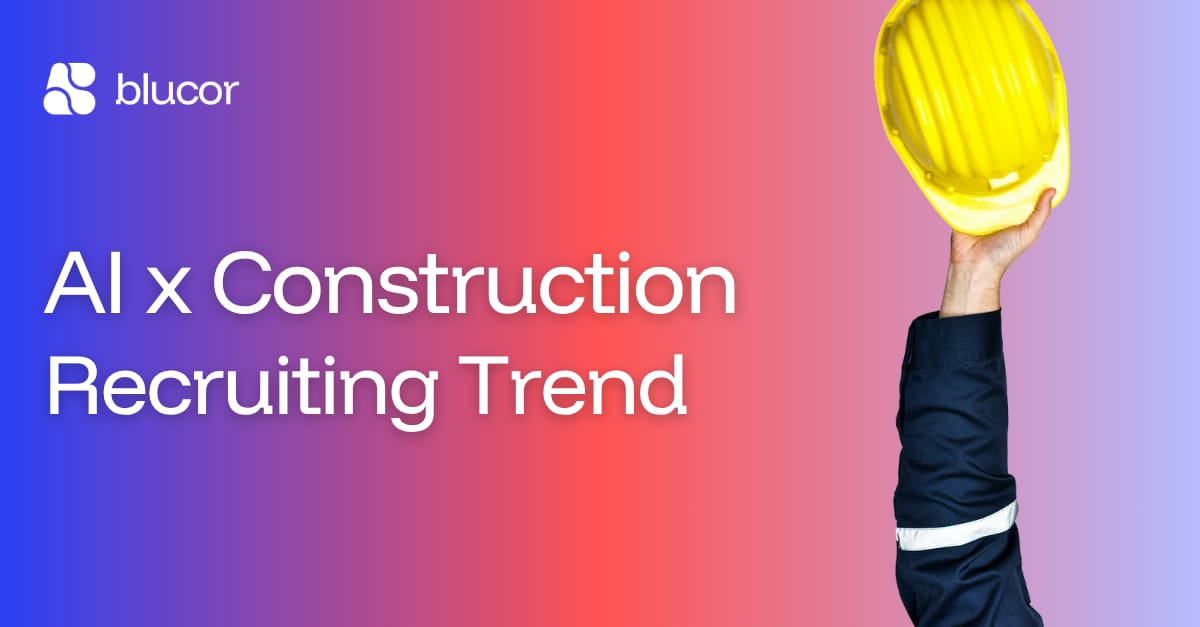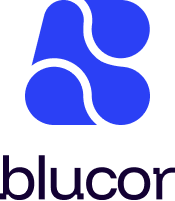- Blucor's Newsletter
- Posts
- How AI Recruiting Is Rebuilding Construction Hiring
How AI Recruiting Is Rebuilding Construction Hiring

Construction projects are surging, yet qualified workers remain scarce. The U.S. Chamber of Commerce has reported that most contractors struggle to fill open positions. Traditional recruiting methods cannot keep pace with demand, forcing HR teams to rethink how they attract, screen, and retain skilled labor. AI recruiting now fills that gap. It automates repetitive work, surfaces qualified candidates, and helps construction firms build stronger teams faster.
TL;DR:
This post explains how AI recruiting is reshaping construction hiring. You’ll see how automation and skill-matching are closing the labor gap, how digital tools improve candidate experience, and what trends are shaping the next phase of workforce transformation in construction.

The Labor Shortage That Won’t Quit
Construction has battled a skilled labor shortage for more than a decade. Retirements outpace new entrants, and younger workers often choose tech or logistics over trades. The result is a widening gap between project timelines and available talent. Recruiters spend hours screening applicants who may lack certifications or site-readiness, while qualified workers get lost in the shuffle.
AI recruiting changes that equation. Instead of relying on manual resume reviews and phone screens, AI systems can assess thousands of applicants in minutes, flag the best fits, and schedule interviews automatically. For construction HR teams managing dozens of open roles, that shift means less time chasing paperwork and more time building relationships with high-value candidates.
How Construction Firms Use AI Recruiting Today
AI recruiting tools are no longer experimental. Many construction companies now use voice-based AI agents or chat systems to handle early-stage screening. These systems collect key details such as certifications, work authorization, and safety training before a recruiter ever picks up the phone.
For example, BlancAI’s voice agent Hope automates over 80% of manual pre-screening tasks, supports 30+ languages, and integrates with more than 100 applicant tracking systems. A recruiter can post a job, teach the AI the role requirements once, and receive a ranked list of qualified candidates ready for review. This approach fits perfectly in construction, where roles range from welders to project engineers and every minute of downtime costs money.
Automation also helps maintain compliance. AI can verify OSHA certifications, confirm drug test history, and ensure documentation is complete before onboarding. That level of consistency reduces risk and keeps projects moving without administrative bottlenecks.
The Payoff: Speed, Safety, and Simplicity
AI recruiting delivers measurable gains across three fronts.
1. Efficiency at Scale
Screening thousands of applicants manually can take weeks. AI cuts that to hours. One BlancAI client, Soracom, processed 1,000 applications in a single day and hired their ideal candidate within a week. Recruiters can redirect that saved time toward interviews and offers. Some teams have reduced recruiting costs by up to 78% and saved more than 100 hours each month.
2. Safety-Focused Hiring
Construction hiring is about more than filling roles. Every worker must meet safety and compliance standards. AI tools can cross-check certifications, flag expired credentials, and prioritize candidates with proven safety records. That proactive approach reduces incidents and insurance costs.
3. Multilingual Candidate Experience
Many construction workers speak English as a second language. AI recruiting platforms that support multiple languages make the process more inclusive and accurate. Candidates can complete phone interviews in their preferred language, improving engagement and reducing drop-off rates.
Emerging Trends Shaping Construction Recruiting
The next wave of AI recruiting goes beyond automation. It focuses on prediction, personalization, and workforce intelligence.
Predictive Hiring
AI models are learning to forecast which candidates are most likely to stay long-term based on past performance, commute distance, and project type. This helps HR teams reduce turnover and plan staffing more strategically.
Smart Workforce Allocation
As digital worker adoption grows, AI systems can analyze project data to recommend where to deploy talent next. For example, if a project in Texas needs certified crane operators, the system can identify available workers nearby and pre-screen them automatically.
AI-Driven Safety Compliance
New tools are linking recruiting data with safety analytics. A candidate’s training history, incident record, and certification renewals can be tracked from hire to project completion. The result is a safer, more transparent workforce pipeline.
Integration with Workforce Analytics
AI recruiting is merging with HR tech stacks that track productivity, attendance, and retention. This creates a feedback loop where hiring decisions are informed by real performance data, not just resumes.
Building the Future Workforce
AI recruiting does not replace human judgment. It strengthens it. Recruiters still make the final call, but now they have data, automation, and insight on their side. As the industry faces ongoing labor shortages and rising project demands, those who adopt AI-driven hiring will move faster, hire smarter, and deliver safer worksites.
Construction is built on precision and planning. Recruiting should be too.
Next Step: Cut screening time, keep sites safer, and scale hiring without adding headcount. Book a demo or start a free trial to see how Hope automates pre-screening and saves up to 67% in time and cost.